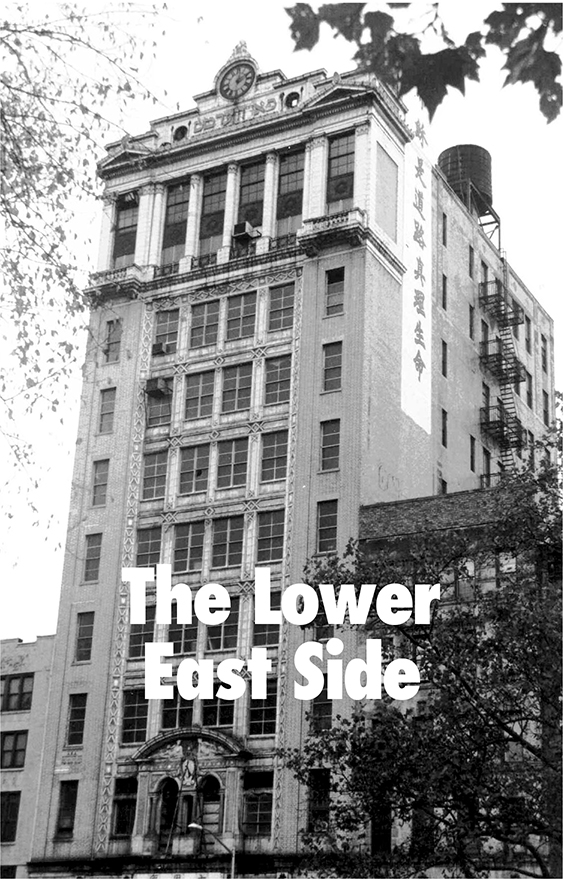
PHOTO BY MYRNA KAYTON

PHOTO BY MYRNA KAYTON
The Lower East Side is most famous for its turn-of-thecentury Jewish history—from 1881 to 1914, two million Jews fled the Pale of Settlement (the Jewish ghetto of four-five million, which comprised one-third of Russia) to come to the United States. It was the largest movement of Jews in the history of the world up to that time.
Many had been active in the socialist Bund, which unionized the factories and organized political demonstrations against the Czar. They used this experience to found unions in New York City in the garment industry, establish radical newspapers, and elect socialists to office. The Lower East Side spirit is embodied in Emma Goldman, Abraham Cahan, the Rosenbergs, Morris Hillquit, and Meyer London—its first Socialist Party congressman.
Peddlers and sweatshops proliferated, as did hundreds of tiny synagogues for the deeply religious orthodox Jews.
There’s an old joke about the history of the Jews in New York that says the first generation settled in Manhattan, the second generation moved to the boroughs, the third generation moved to Long Island and Westchester County, and the fourth generation is desperately trying to get an apartment back in Manhattan but they can’t afford the rent anymore. Currently three-quarters of the Lower East Side is Latino and Chinese with the remaining twenty-five percent being split between African Americans and Jews, mostly elderly.